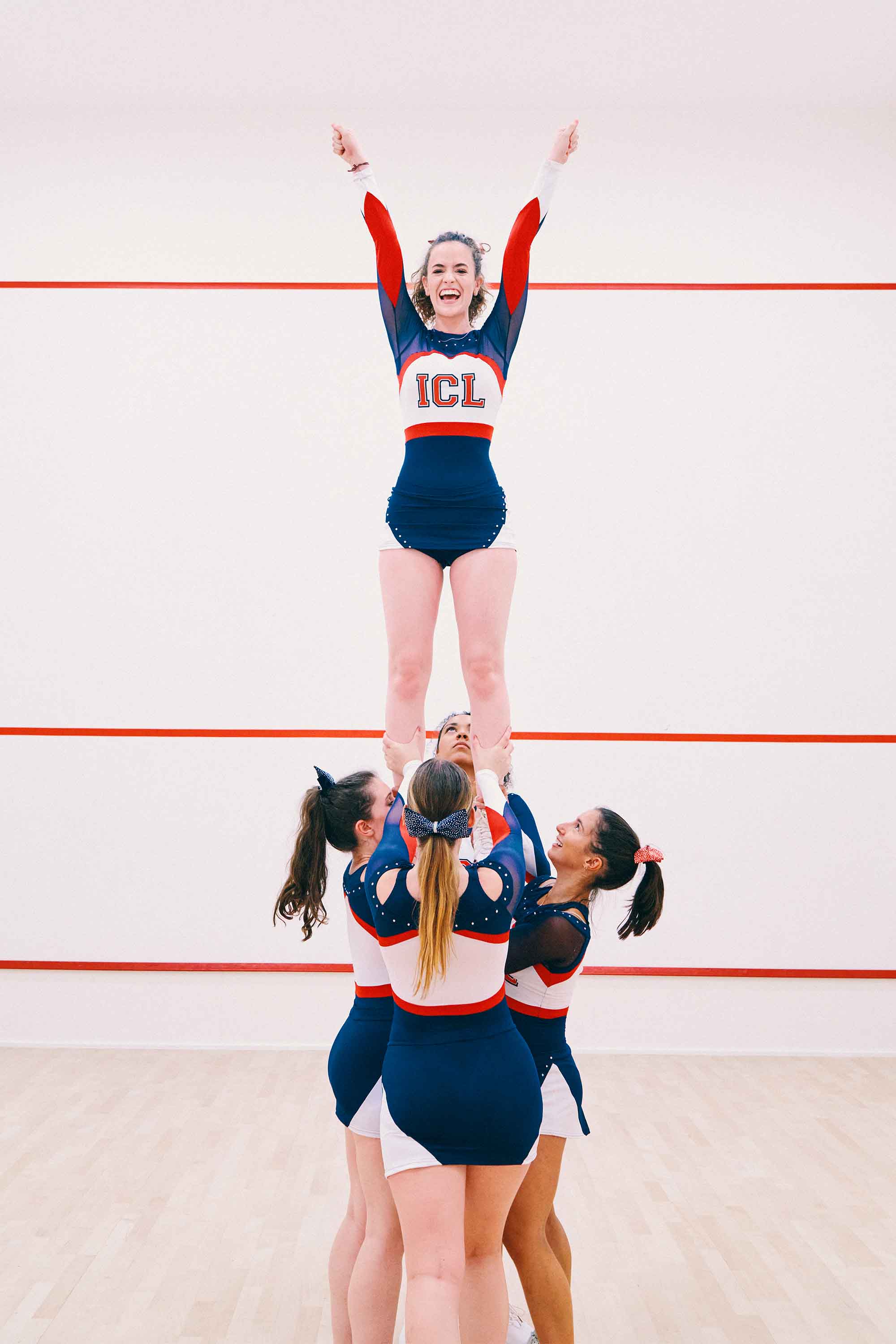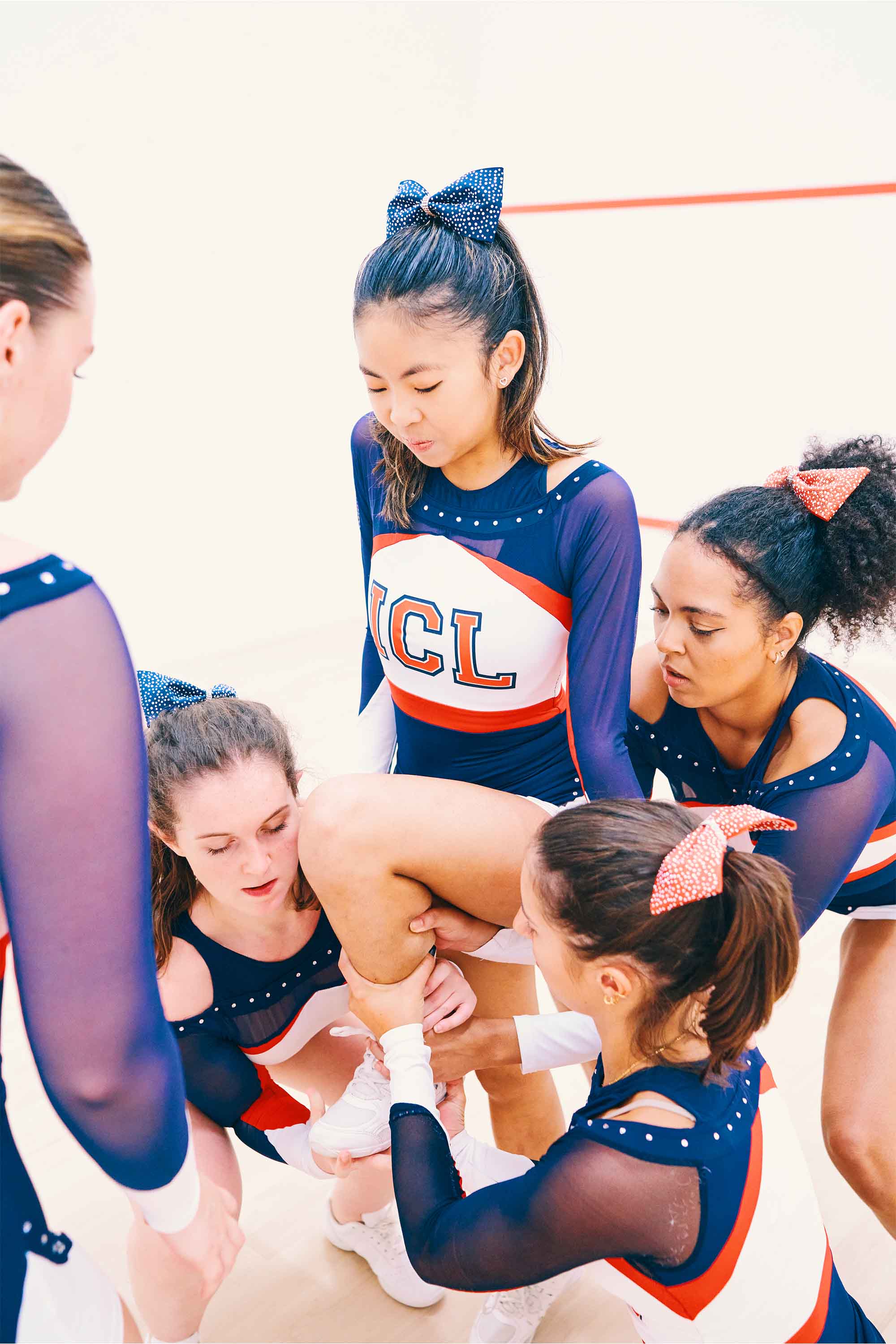Society / Cheerleading Society
Support Network
Stunts, jumps and dance – cheerleading at Imperial is a seriously fun business.
Words: Megan Welford / Photography: Joe McGorty

Mention Sport England to Rita Correia (Bioengineering 2023), the outgoing president of Imperial’s Cheerleading Society, and her mood darkens. “It’s very insulting that they say cheerleading is not a sport,” she says, “even though it has been classed as a sport for the Los Angeles Olympics in 2028!”
Cheerleading, she explains, is a demanding, competitive performance sport involving synchronised acrobatics, stunts, jumps and dance. There are no pompoms (though there are in non-competitive cheerleading), and it’s not something that happens on the sidelines of another sport. “We are aligned with the American Football Society because we both came out of the American Society,” says Correia. “We socialise with them, but we don’t cheer for them.” The two cheerleading teams at Imperial – Titans Ice and Titans Ignite – train for three hours a week, as well as two hours of strength and conditioning. “I also run and do pilates,” she adds.
The Cheerleading Society takes everyone who tries out – most don’t have experience – but Sport England’s decision impacts on the team. “Not being classed as a sport means we’re eligible for VAT,” says Correia, “so it’s quite expensive.” The team coach local primary school children in exchange for using their mats, and this year the committee has spent time applying for grants and fundraising to keep costs down and stay open to all. “We are competitive, but mostly it should be fun,” Correia says.
She used to be a gymnast, which is related to cheerleading but with one crucial difference: “In gymnastics, the movements are individual, but in cheerleading we work as a team. We rely on each other. If one person isn’t there, we can’t perform.”
A stunt group of four is made up of two bases, a backspot and a flyer. Incoming president and flyer Patricia Acha Zamora (Electrical and Electronic Engineering with Management, Final Year) says she was initially scared of flying. “As a flyer you’re the most visible and you get thrown in the air. When I told my mum she was terrified! So I tried out as a base, but a previous committee member suggested I might be a good flyer, because I love performing and I have a big smile. The cheerier you are, the more points you get!” However, you do get thrown in the air. “It is a dangerous sport, certainly at a higher level,” says Acha Zamora. “You have to trust the others. Once the stunt groups are formed we do a lot of team-building – and a lot of socialising.
“Cheer is both physical and mental,” she says. “If you think you won’t hit a stunt, then you probably won’t. A week before our first competition there was something I just wasn’t getting. It was an inversion, with my hands on the floor, where I had to do a forward roll and land on the backspot’s shoulders, and she’d bring me over. There was a lot of frustration and fear for me. But I talked to my group and the coach and Rita said: ‘Don’t think about it. You’re doing everything right, just trust yourself and your bases.’ And the day before the competition, I landed it, and I landed it in the competition too! I fall in love with it a little bit more every time I perform.”



Read more about the Cheerleading Society on the Imperial College Union website.


